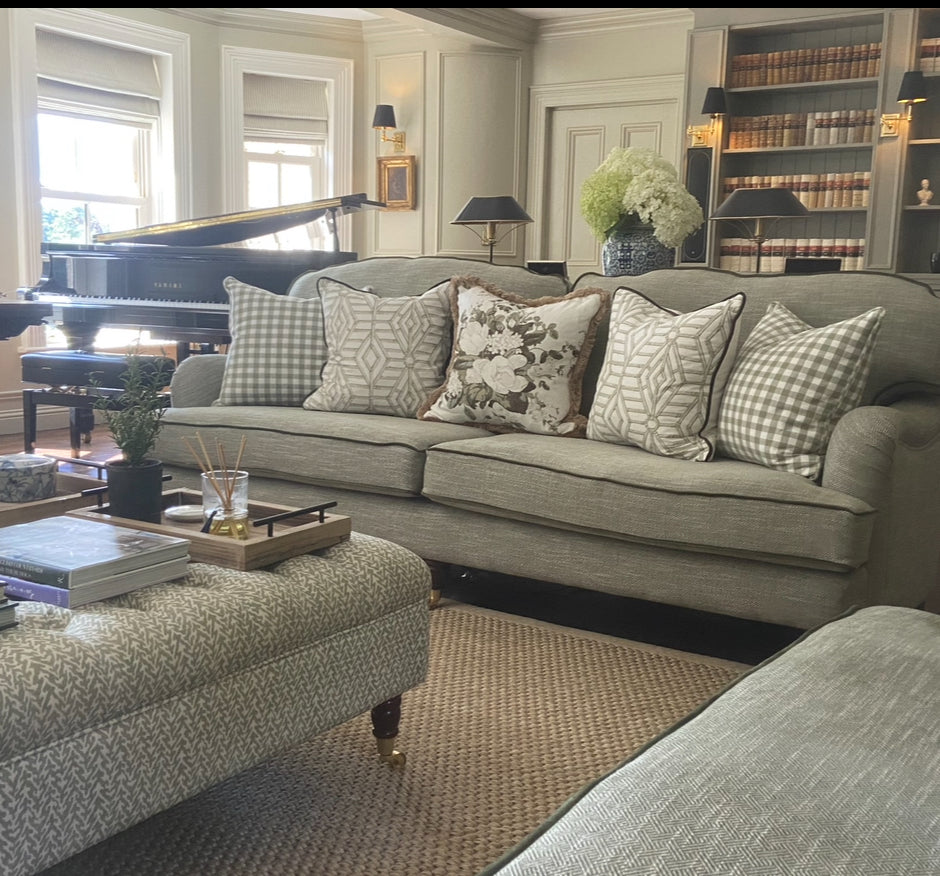
Bringing a Home Together: My Design Approach
When it comes to creating a space that feels truly like home, there are a few key design elements I always prioritise. Whether it's setting the right mood with lighting, arranging furnishings to encourage connection, or blending different textures, patterns, and eras, every choice is intentional. Here's a closer look at what works for me when bringing a home together.
1. Lighting: The Essential Mood Setter
Lighting is one of the most crucial elements of any design. For me, it’s where the design process truly begins. The right lighting can set the tone of a room, making it feel warm, inviting, and comfortable. I like to use a combination of wall lights and table lamps, which provide soft, ambient lighting that is far more flattering than overhead down lighting.
I rarely use down lighting because I find it too harsh and unwelcoming. Instead, I prefer to create layers of light that can be adjusted throughout the day and evening. Wall sconces, floor lamps, and strategically placed table lamps cast a softer, more ambient glow that makes a space feel warm and lived-in.

2. Furnishing Layout: Bringing Pieces Together
How you arrange your furniture can completely change the feel of a room. I prefer to bring my furnishings inward, as opposed to pushing everything out against the walls. This might seem counterintuitive, but it actually makes a room feel more intimate and surprisingly larger.
When furnishings are clustered together, it creates natural conversation zones. Imagine a sofa facing two armchairs with a coffee table in between, rather than a lonely sofa pushed up against the wall. It invites people to sit down, relax, and engage. Keeping furniture away from the walls can also give a space better flow, creating paths around the room that feel more welcoming and organic.
3. Mixing Textures and Patterns
For me, one of the most exciting parts of design is experimenting with different textures and patterns. This is what gives a room character and makes it feel like home. I love to mix a variety of textures because they bring depth and warmth to a space. For example, sisal rugs add an earthy, natural feel, while velvets bring a touch of luxury. Cotton and linen are my go-tos for comfort, with their soft and inviting feel.
Patterns are equally important. A room that is all solids can feel flat, but mixing patterns—whether through throw pillows, rugs, or even wallpaper—adds visual interest. The key is to balance them, so they complement rather than clash. A geometric print next to a floral might not work, but a striped pillow paired with a subtly patterned rug can bring a lovely harmony. Mixing textures and patterns is what makes a space feel thoughtfully layered and lived-in.

4. Blending Old and New
Another design principle that I hold dear is the blending of old and new pieces. Incorporating a mix of vintage and modern elements brings a sense of history and storytelling to a space. It’s the difference between a room that looks like a showroom and one that feels like it’s been curated over time.
For instance, pairing a sleek, contemporary sofa with a vintage wooden coffee table or hanging a modern piece of art above an antique sideboard can create an intriguing contrast. The juxtaposition of styles and eras makes a room feel more personal and dynamic. There’s something special about a home where you can see a mix of treasured heirlooms alongside newer finds—it tells a story about the people who live there and their unique tastes.

Bringing It All Together
Each of these design elements—thoughtful lighting, intentional furniture layout, a mix of textures and patterns, and a blend of old and new pieces—plays a vital role in how I bring a home together. The goal is always to create spaces that feel warm, inviting, and personal. It’s not about following trends or sticking to a rigid style; it’s about making a space that truly reflects you and feels like a place you want to return to, time and time again.
In the end, a well-designed home isn’t just about how it looks but how it makes you feel. By paying attention to these details, you can create rooms that are both beautiful and functional, and most importantly, spaces that feel like home.
